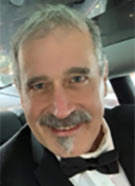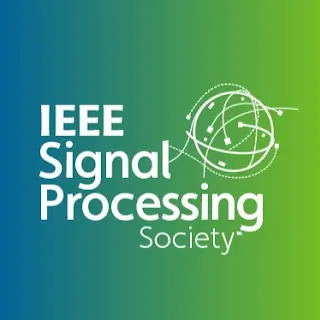Member Highlight: Al Bovik

Member Highlight: Al Bovik
The University of Texas at Austin, USA
 Al Bovik (LF ‘23) is currently he is a visiting professor in the Department of Electrical, Computer, and Energy Engineering and the ATLAS Institute at University of Colorado Boulder and the Cockrell Family Regents Endowed Chair Professor at The University of Texas at Austin. His research interests fall at the nexus of image processing, computational vision, and visual neuroscience, with applications in digital photography, digital television, home cinema, and streaming and social media. However, his main interests are in working with his graduate students on identifying and solving problems of impact, and in engaging with students in the classroom on these fascinating problems. Along the way, he has been elected to the US National Academy of Engineering, and received the John Fritz Medal, the IEEE Edison Medal, and a Primetime Emmy Award. He co-founded and was the longest-serving Editor-in-Chief of the IEEE Transactions on Image Processing and created/Chaired the IEEE International Conference on Image Processing, which was first held in Austin, Texas, 1994.
Al Bovik (LF ‘23) is currently he is a visiting professor in the Department of Electrical, Computer, and Energy Engineering and the ATLAS Institute at University of Colorado Boulder and the Cockrell Family Regents Endowed Chair Professor at The University of Texas at Austin. His research interests fall at the nexus of image processing, computational vision, and visual neuroscience, with applications in digital photography, digital television, home cinema, and streaming and social media. However, his main interests are in working with his graduate students on identifying and solving problems of impact, and in engaging with students in the classroom on these fascinating problems. Along the way, he has been elected to the US National Academy of Engineering, and received the John Fritz Medal, the IEEE Edison Medal, and a Primetime Emmy Award. He co-founded and was the longest-serving Editor-in-Chief of the IEEE Transactions on Image Processing and created/Chaired the IEEE International Conference on Image Processing, which was first held in Austin, Texas, 1994.
We approached Al Bovik to learn more:
Q: What inspired you to become a faculty in the field of signal processing?
Well, quite simply taking Tom Huang’s image processing class. I had been bouncing around, enjoying the mathematics of control theory, and even started my graduate program in that direction. But the amazing visual aspect of Tom’s work, the equally subtle mathematics, and fact that huge future applications seemed inevitable, propelled me in the direction of image processing.
Q: What excites you most about your work?
This is easy: two things. First, working with brilliant and curious students every day on problems that matter. Second, working in the interstices between different disciplines, where the important and unsolved problems often lie.
Q: How does your work affect society?
I have been lucky in that the problems I and my students have worked on have proved to be quite useful in a variety of industries, including photographic, broadcast, gaming, streaming, and social media. Our neuroscience-based quality models are used to monitor, measure, and control well over half of all bits moving over the internet.
Q: Signal Processing has changed a lot since you started working in this area. What are the major changes the area has been through and how did you adapt to them?
From a personal point of view, the acceptance and adoption of perceptual models in areas of signal processing that involve human participation. From a wider view, of course, the explosion of deep learning and its ability to lift the performance of so many applications. This has not only impacted the marketplace and research, but education. In my own classes, I have had to toss about half or more of legacy material in favor of better-performing deep learning models. But also, I am now exploring using language models as an alternative way of creating in-class live demos. That’s pretty exciting.
Q: What challenges have you had to face to get to where you are today?
Well, having come from humble origins, I worked and paid my own way through college. That was challenging for a know-nothing kid fresh out of high school! I would also say that my vision of neuroscience-based image and video systems was resisted for a long time. The response to things like foveated video compression was typically Cool! (yawn). But these are important todasy in VR system development.
Q: What do you think was the most important factor in your success?
Sticking to what I enjoyed best and not trying to follow the crowd. My passion was in trying to understand how we see, to develop new models of perception that could then be brought into engineering applications. So … persistence in doing what I believed in and loved studying. Oh, and realizing that my students were at least as bright as I, and that I generally learned more from them than they from I.
Q: Failures are an inevitable part of everyone's career journey. What is the most important lesson you have learned from dealing with failures during your career?
Well, this is easy. Taking failures in stride. Early on it was hard for me to take rejection – of papers, proposals, ideas. Sometimes it was frustrating that rejection was not well-founded? How often have any of us wanted to take a paddle to a silly reviewer? (figuratively of course). So, realizing that we are all trying to do our best, we all falter at times, just pick one’s self up and try again.
Q: What advice would you give to scientists/engineers in signal processing?
Well I hesitate to say “don’t follow the crowd.” Because it is true – once the crowd has formed around a topic, the important work is generally already done. So, look outside the box, find problems that keenly interest you, and that align with your skillset. Brilliance is not just found in proving a new theorem, or creating a new architecture. It’s finding your inner creativity that will only rise to the surface if you let it. And that will only happen if you relax and work on what really interests you.
Q: What is the key take-home message would you like the readers to remember from this interview?
Easy. Each of us has one life to enjoy, so do so. Don’t work too hard, it’s counterproductive. Make sure you enjoy your work, the topic, and don’t do it (just) for the money. Do it for the fun of it.

